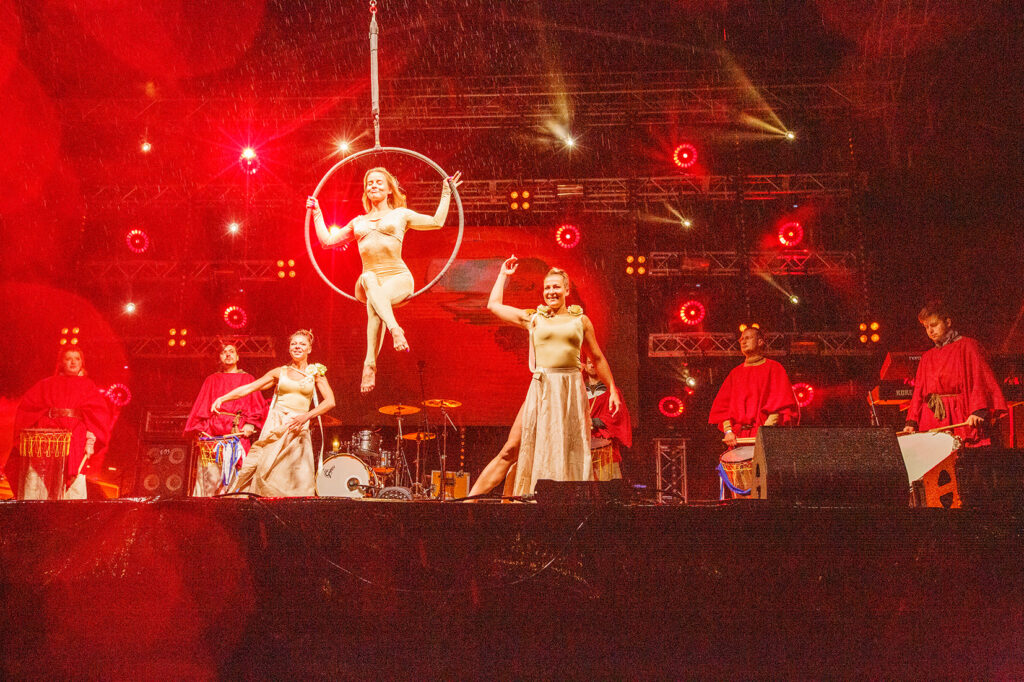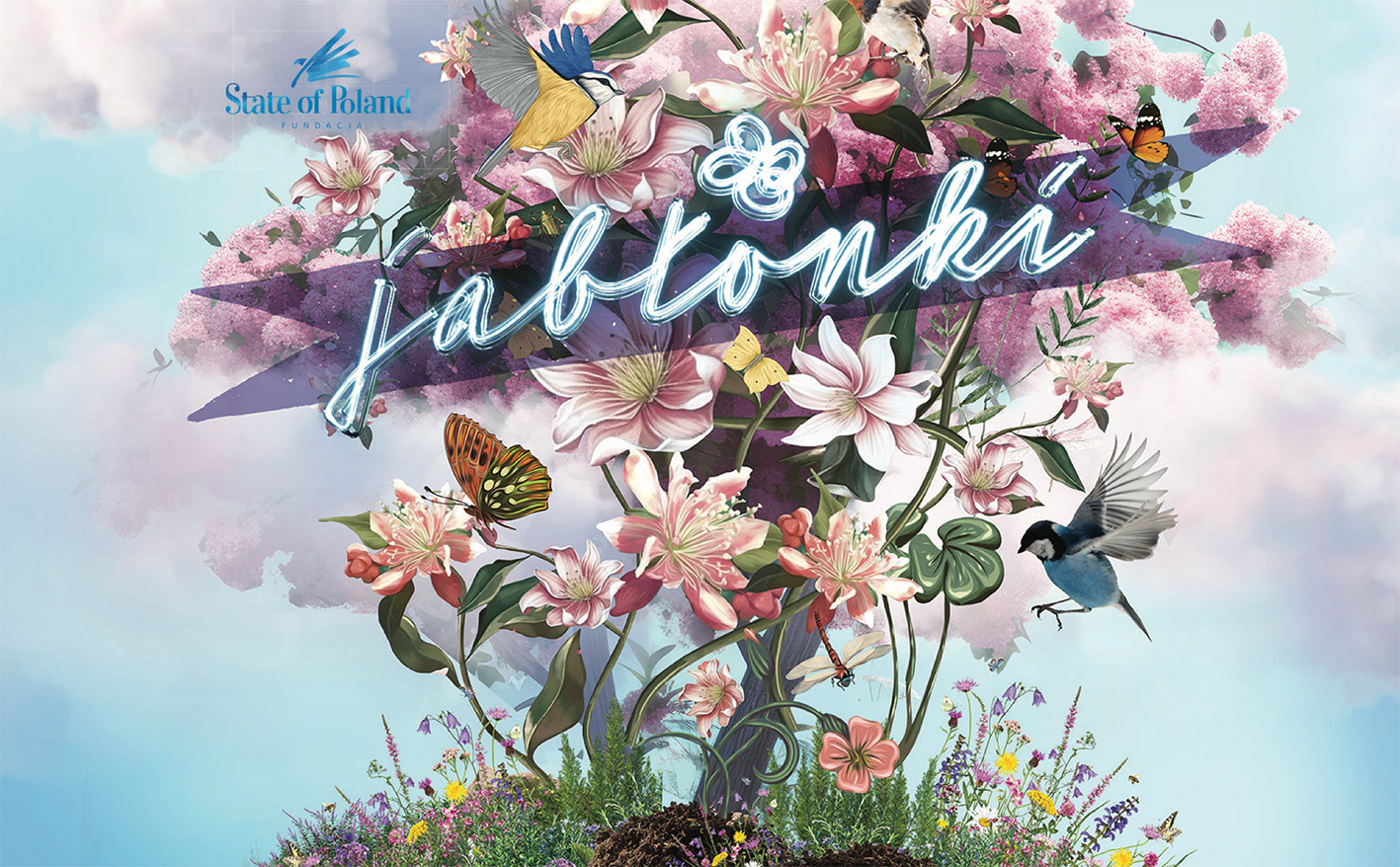Apple Fest: A Journey of Sweet Success and Rainy Challenges
Working on the concept of “Jabłonki Swawole” – a festival that celebrates Polish apples – seemed like a daunting task at first. After all, how do you turn an everyday fruit into a cultural phenomenon? It wasn’t just about apples; it was about everything surrounding them – culinary culture, traditions, values, and the dedication of Polish orchard farmers. It was about crafting a story rich with symbolism, Slavic rituals, and the simple joy of nature’s bounty.

The Beginning
The festival officially launched on a chilly September day during the pandemic. Gatherings were restricted, and to add to the challenge, the weather was unforgiving. It was one of the coldest days of the year, with temperatures dropping to 15°C, heavy rain pouring down, and the beach where we planned to celebrate was knee-deep in water. This wasn’t a one-off occurrence. Rain seemed to follow us to almost every subsequent festival. We joked that if we organized Jabłonki on a desert, it would instantly flood.
Why Apples?
Poland is Europe’s largest apple orchard and one of the top global producers. Our apples are renowned for their unique taste, shaped by the Polish climate – cold winters that keep pests at bay and warm summer days with cool nights that give apples their deep flavor. They are a symbol of abundance, health, and tradition, much like cherry blossoms are for Japan.
Slav Glam. Sensuality and Richness in Every Creation
Our mission was clear: to make the world see apples as a signature symbol of Poland. Apples are with us year-round – from the delicate blossoms of spring to the ripe, juicy harvests of autumn. They’re preserved for winter, stored in cellars, transformed into sweet jams, or dried for healthy snacks. They’re our secret to enduring long, cold winters.
Working on Jabłonki Swawole was a journey that blended creativity, collaboration, and countless “aha” moments. When we first began discussing how to present apples—this everyday, humble fruit—as a grand symbol of Polish culture, the task seemed daunting. We all knew apples are an integral part of our lives, but how do you elevate something so ordinary into a visual and cultural masterpiece? The real breakthrough came during one of those intense, slightly chaotic briefing sessions with artists and production teams. Someone, half-jokingly, coined the term Slavic Glam. Another followed with, “Or maybe… Slavic Dolce & Gabbana?” Suddenly, everything clicked. The room filled with laughter, but also a spark of shared understanding. From that point on, our ideas flourished like an orchard in spring.
This conceptual shift brought out the best in every artist involved. The Dumplings, with their modern and fresh take, reimagined Maanam’s classic Kocham Cię, Kochanie Moje, weaving youthful energy into its nostalgic soul. Bitamina gave Niech No Tylko Zakwitną Jabłonie an almost otherworldly charm, turning blooming apple trees into a metaphor for hope, beauty, and rebirth. Anna Jantar’s beloved Przetańczyć z Tobą Chcę Całą Noc found new life as a lush, dreamy cover that danced through Polish orchards in golden light. And let’s not forget Tylko Mnie Poproś do Tańca—a song that, in its reinterpretation, reminded us that life’s simplest pleasures often hold the most profound beauty.
Each creation was a feast for the senses: bold colors, rich textures, and layers of meaning that invited audiences to experience the culture of apples as they never had before. The musicians, directors, and creatives didn’t just treat these projects as jobs—they embraced them as personal artistic journeys. And I think that’s what made the works so lush, mature, and full of life.
It wasn’t always smooth sailing. I remember days when explaining the essence of an apple—the sensual crunch, the fragrant blossoms, the ancient Slavic symbolism—felt like trying to describe the taste of summer to someone who’s never felt the sun. But once Slavic Glam became our guiding star, the work unfolded effortlessly. Suddenly, we weren’t just creating music or visuals; we were capturing a cultural phenomenon, bottled like the perfect jar of homemade apple preserves.
What I cherish most about this experience is how it brought together so many extraordinary artists and collaborators who understood the vision—and elevated it. Each project, whether it was a song, a film, or even the Jabłonki Swawole book, carried that same spirit of celebration, sensuality, and richness. We weren’t just creating for the sake of creating. We were weaving a story that tied together Poland’s beauty, tradition, and a fresh, modern perspective. It was as if we were planting our own creative orchard—one that will continue to bear fruit for years to come.

Celebrating Poland’s Beauty and Tradition
The Festivals
The first festival took place in Warsaw in 2023, kicking off a series of events in cities like Toruń, Giżycko, Sandomierz, Racibórz, and Ustka. Each event combined culinary delights, live music, and apple-themed celebrations. Artists like Igo, Natalia Szroeder, and The Dumplings brought vibrant energy, while workshops and tastings highlighted Poland’s rich apple culture.
These festivals weren’t just about apples; they were about reconnecting with nature, celebrating community, and showcasing Polish hospitality.
The Challenges
The road wasn’t easy. Organizing festivals during a pandemic, battling unpredictable weather, and dealing with logistical hurdles taught us resilience. Yet, each event was a triumph, proving that even the simplest of ideas – celebrating apples – could bring people together in meaningful ways.
Why Jabłonki Matters
“Jabłonki Swawole” isn’t just a festival; it’s a statement. It’s about reminding the world of Poland’s cultural richness, natural beauty, and the dedication of its people. It’s about the taste of a perfectly ripe apple, the sound of laughter at a festival, and the feeling of connection – to nature, to tradition, and to each other.
The festival also expanded beyond Poland, with initiatives like planting apple trees in places like Central Park in New York and Fukudenkai in Tokyo, spreading the symbolism of Polish apples globally.
A Taste of Poland
The festival also highlighted the diversity of Polish apple varieties – from the tart Antonówka to the sweet Ligol. Beyond fresh fruit, it showcased how apples are used in Polish cuisine: apple pies, dumplings, ciders, and even apple-infused savory dishes like roast duck.
Take a look at some of the moments from the festival and see what makes it so special.

Have a Look an Jablonki Swawole Festival